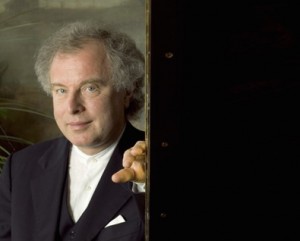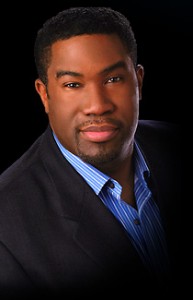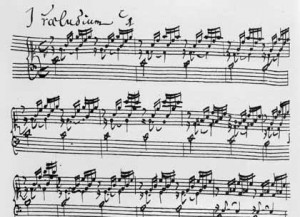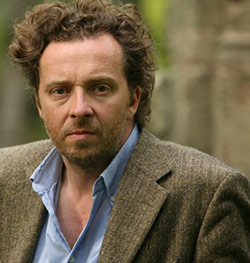Ludwig van Beethoven
The Ten Violin Sonatas
Beethoven wrote his first violin sonatas, a set of three (Op. 12) in 1797-98. Six more appeared by early 1803, making a fairly compressed time span for a medium in which Beethoven was to write just one more in 1812. All but the tenth were written before the composer was 32 years of age. Yet all of them, to varying degrees, show Beethoven straining at the reins that in his early years still tied him to the genteel world of eighteenth-century classicism.
Although we refer to these ten works as “violin sonatas,” in the original scores the music is invariably identified as being “for the fortepiano and a violin” (rather than the other way around). Such was usually the case with eighteenth-century works of this type, but it was hardly true with Beethoven, where we can see in even the first sonata the nearly equal partnership of the two instruments. In these ten sonatas, Beethoven explores the ways and means of combining two voices of unequal sound mass into a dramatic partnership and coherent unity, “a colloquy of reciprocal enrichment,” in Louis Biancolli’s words.
Beethoven was renowned in Vienna for his prowess as a pianist, but he was also intimately familiar with the violin. He had taken lessons as a youth in Bonn, and later, at the age of 24, he sought further study with Ignaz Schupannzigh in Vienna. Hence, Beethoven was in an ideal position to explore the expressive potentialities and technical challenges of the violin as well as of the piano, some of which may sound “easy” to the casual listener, but which even today demand superior musicians to do them justice. Violins were undergoing changes in construction during Beethoven’s lifetime (longer neck, fingerboard and strings; higher bridge; greater tension on the strings), resulting in greater range and volume of tone. These did not go unnoticed by Beethoven, who made steadily increasing technical demands on the instrument.
Concertgoers wishing to delve deeper into the intricacies of these sonatas can be directed to books written by two of the twentieth century’s greatest violinists, Joseph Szigeti (The Ten Beethoven Sonatas for Piano and Violin, 1965), and Abram Loft (Violin and Keyboard, Volume II, 1973).
Program 1 (May 26, 8:00pm)
Sonata no. 1 in D major, Op. 12, no. 1
Right from the opening of the first sonata, there is a vigour and urgency to the music nonexistent in the many violin sonatas of Mozart and his contemporaries. Furthermore, there are numerous unconventional key relationships and excursions into remote tonalities. Notice that the violin, not the piano, first presents the lyrical theme that immediately follows the opening gesture. As for the new-found energy and urgency of the music, one can point to but a single pause for breath in the entire first movement (at the repeat of the exposition). The slow central movement is an orthodox theme and variations set, while the finale is a rondo, written in a lively, playful style, and which incorporates several examples of the rough humour for which Beethoven later became renowned.
Sonata no. 2 in A major, Op. 12, no. 2
“Where’s the beef?” Some concertgoers may remember this catchy slogan used for a promotion by a hamburger chain some years back. Similarly, one might well ask, “Where’re the themes?” in the first movement of Beethoven’s second violin sonata. In fact, there really aren’t any. Themes and melodies are not what this movement is “about.” Clearly, however, it is not the meagre musical material Beethoven works with that sets the sonata’s musical standard, but rather how he manipulates it. Not one listener in a hundred is likely to fault Beethoven for lack of a nice tune, such is the music’s jocular tone, harmonic sideswipes, impish humour and fascinating interplay of violin and piano. The slow movement is based on a lyrical, melancholic theme in A minor. Each of its two parts is announced by the piano, then repeated by the violin. The concluding movement is a high-spirited rondo with frequent humourous touches.
Sonata no. 3 in E flat major, Op. 12, no. 3
The third sonata features a sense of grandeur, power and majesty found in few other works of Beethoven’s early years. In addition, the piano writing is often of near-heroic proportions, by far the most substantial in the first three sonatas, and scarcely equalled in any of the subsequent sonatas. The violin is far from idle, but much of the piano work might just as well have been channeled into a sonata for solo piano. The second movement constitutes the emotional centre of gravity in this sonata. This is the first adagio we encounter in the traversal of these sonatas, and one of the finest slow movements in early Beethoven. To Abram Loft, it is music of “wonderful, timeless tranquillity … a lovely bouquet, fragrant with gracious melody and luxuriant turns and roulades.” The finale is a rollicking, joyous rondo with a catchy if hardly distinctive main theme. Frequent contrasts of dynamics and register are a constant feature of the movement.
Sonata no. 9 in A major, Op. 47 (Kreutzer)
The ninth of Beethoven’s ten sonatas for violin and piano is the grandest and most impressive of them all. It is by far the longest, is the most difficult, contains the richest textures, and to a greater extent than any other, puts both musicians on an absolutely equal footing throughout. Beethoven originally wrote his Kreutzer Sonata for a man named Bridgetower, but they had a falling out and Beethoven dedicated it instead to a certain Rodolphe Kreutzer, who never performed the work and even called it “outrageously unintelligible.”
Of the ten sonatas, only the Kreutzer has a slow introduction, a feature usually reserved for grand, imposing works Throughout the opening movement the violinist is called upon to execute numerous chords in triple and quadruple stops (playing across three and four strings simultaneously). The theme of the Andante con variazioni, the longest movement in all ten sonatas, is lofty, elegant and noble in its simplicity. In the finale, the rapid, nearly continuous rhythmic pattern of long-short-long-short belongs to the tarantella, a dance that originated in Italy and, according to legend, served to counteract the poisonous bite of the tarantula spider.
Program 2 (May 27, 11:00am)
Sonata no. 6 in A major, Op. 30, no. 1
Op. 30 dates from1802, the year Beethoven began sketching the mighty Eroica Symphony, a work as far removed as could be imagined from the pervasive geniality and charm of the first of the Op. 30 sonatas. But the two works share a common characteristic in the compositional process at work in their opening subjects. In the sonata, piano and violin share the material, with each hand of the piano part a separate element in itself. This means there are actually three strands of melodic material at work, intertwining and coming together to form a coherent whole. Similarly, in the Eroica, cellos, violins and winds all contribute individual melodic strands to the complex first subject. The ravishingly beautiful slow movement is in ternary form, with the outer sections distinguished by the persistent dotted rhythm (long-slow-long-slow), the inner portion by gently rippling triplets in the accompaniment. The final movement is a theme and variations set in which violin and piano take turns in presenting the melodic strands of the theme.
Violin sonata no. 7 in C minor, Op. 30, no. 2
Without question, this sonata is one of the grandest in the violinist’s repertory. It is a work of drama, passion, power and almost symphonic scope. The key of C minor immediately alerts us to music of serious import. Of Beethoven’s ten violin sonatas, this is the “biggest” in feel and scope. It is also one of just three (Nos. 5 and 10 are the others) to boast four movements rather than the standard three.
The first movement opens with a darkly mysterious, almost menacing subject divided into several epigrammatic components, a subject eminently suitable for development later on. The strongly contrasting second subject in E-flat major, march like yet playful, is introduced by the violin. The slow movement is one of heavenly beauty. The scherzo movement truly lives up to its title (“joke”) – witty, playful, full of rhythmic quirks and rough humour. The finale returns to C minor and, unusually for a large-scale work that opens in the minor tonality, finishes in the minor as well. Relentless dramatic tension and emotional strife mark this uncompromising movement.
Sonata no. 8 in G major, Op. 30, no. 3
This has been dubbed the “charmer” of the Op. 30 sonatas. Like many other works in G major, it breathes the air of unspoiled nature, untroubled emotions, lively spirits and gaiety. Indeed, Beethoven composed the sonata during the pleasant summer days he spent in the beautiful woods outside Vienna at Heiligenstadt.
The first movement is in standard sonata form with two themes in contrasting keys, a development section and a recapitulation. The central movement is neither slow nor a minuet (Beethoven specifies the tempo of a minuet, not a minuet itself). It consists of a series of slightly varied restatements of the opening subject, all set to music of enchanting loveliness and rococo grace. The final movement, a rondo, bubbles along with vivacious good humour and a strong suggestion of a peasant’s bagpipe droning away in the bass.
Program 3 (May 27, 3:00pm)
Sonata no. 4 in A minor, Op. 23
Abram Loft assesses the A-minor sonata in these terms: “In no other Beethoven sonata will the duo find a greater challenge to its sense of drama, of timing, of musical repartee … It is one of the most exciting pieces that amateur or professional can play.”
There is much that is unusual about this sonata. It is one of just two in a minor key (the seventh in C minor is the other) Its relentless first movement is in 6/8 metre, unusual for an opening movement of a sonata, as is the tempo marking of presto. Still another unorthodox point to note is the introduction of a new theme (in F major) within the development section, and still another one (in A minor) at the juncture of the development and recapitulation. The playful second movement is neither a slow movement nor a scherzo, but combines aspects of both and supports three full themes. The rondo finale returns to the driving momentum of the opening movement, its urgent main theme, always initiated by the piano, returning frequently and unvaried while in between statements of this theme are found a wealth of episodes contrasting in mood, texture, key, dynamic level and register.
Sonata no. 5 in F major, Op. 24 (Spring)
In the Spring Sonata of 1801, we see Beethoven poised on the threshold of his second-period style. He has still not completely bid farewell to the genteel world of Classicism – graceful themes, transparent textures and traditional accompaniment figures are found in abundance – yet mingling with these attributes we also find a robustness and vigour, a boldly independent spirit straining to burst the bonds of classical restraint and moderation.
This is the most popular of Beethoven’s violin sonatas. It opens with a flowing theme of spontaneous lyricism and gentle radiance, suggestive immediately of the freshness and beauty of spring that has earned the sonata its nickname. The second movement is deeply felt, so much so that some listeners find in it an anticipation of some of Schubert’s most expressive pages.
Op. 24 is Beethoven’s first violin sonata to have four movements. The “extra” movement is extremely short (barely a minute), but it perfectly bridges the sublime simplicity of the second movement and the gracious lyricism of the finale. The finale is a more or less conventional rondo.
Sonata no. 10 in G major, Op. 96
A gap of ten years separated Beethoven’s tenth and final violin sonata from his ninth. The biggest differences between this sonata and its predecessor – easily observed when the two are played in tandem, are its more intimate and restrained tone, gentler sonorities, and the avoidance of drama and heroics.
Like the Kreutzer Sonata, the first movement of the tenth contains three themes, the first of which is imbued with the gentle warmth and grace. The slow movement presages Beethoven’s late style – an adagio of ineffable beauty and restrained exaltation. Here, writes violinist Abram Loft, the players are “as close to paradise as one can approach in this world.” The short and jocular Scherzo in G minor brings us down to earth from the rarefied heights of the previous movement. The finale is a theme and variations movement. The theme has a folksy quality, and proceeds with a gentle swagger in unbuttoned (Beethoven liked the term aufgeknöpft for such music) good humor. Beethoven toys with our expectations as the music makes little detours through changes of tempo and ventures into new harmonic regions, as if the composer were reluctant to bid farewell to his last violin sonata.
 Imagine my delight when I received an email from Jonathan Chan in London, where he is studying at the Guildhall, telling me that he had been awarded the 1715 Dominicus Montagnana violin on loan from the Canada Council Musical Instrument Bank. Canada’s finest young talents compete for the opportunity to use these instruments for a period of time. The competition is tough.
Imagine my delight when I received an email from Jonathan Chan in London, where he is studying at the Guildhall, telling me that he had been awarded the 1715 Dominicus Montagnana violin on loan from the Canada Council Musical Instrument Bank. Canada’s finest young talents compete for the opportunity to use these instruments for a period of time. The competition is tough.






